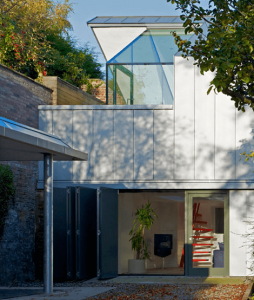There is a wide collection of architecture out there, and we are proud to be responsible for many beloved pieces. For more than a decade, we have been working to provide fantastic designs for various clients. This includes private homes, libraries, housing, and offices. By working with the most talented architect London has, you can add your project to this portfolio too.
Architecture originates from the materials it uses. Between comfort, movement, light, and structure, the material shapes our experiences considerably. However, like everything else, materials change with the times. We create new ones too, expanding the wealth of options. Also, we introduce cutting edge construction techniques and assemblies. This means there are always new things to think about.
New composite options
 At the moment, many designers and architects are looking further into the possibilities of composite materials. These are ones made with natural elements.
At the moment, many designers and architects are looking further into the possibilities of composite materials. These are ones made with natural elements.
It is true that composites have existed for some time. However, so have biocomposites. By definition, they are materials that feature two unique constituent elements or more. One of these is naturally derived. You combine them to produce a new substance with different properties. Often it will offer better performance than you can get with the individual elements.
There is another fact about biocomposites to note. They can turn natural resources into high performance engineering items. Some of the ideas below explore the future of these substances. This is both in aesthetic and functional terms.
Mushroom buildings
Firstly, we have mushroom buildings. Fungi are everywhere; it is in the trees, water, and even our bodies. They can be mushrooms or can take on an alternate form like mould. Furthermore, they can cause illnesses but create antibiotic remedies as well.
There is a chance that fungi may be in the future of building materials. A lot of development has already gone into the creation of mycelium composites. They can have uses as flooring and panelling, as well as other non-structural materials.
Programable biocomposites
MIT and Neri Oxman have been developing programmable water-based biocomposites. This is for digital fabrication and design. The materials are made from molecular components such as cellulose, chitosan, pectin and calcium carbonate. These are abundant, easy to find in insect exoskeletons, human bones, tree branches, and more.
Called Aguahoja, the project has managed to exhibit a collection of artefacts and a pavilion. The latter is really impressive as it showcases how the composites can have varying levels of stiffness, flexibility, and even opacity. Plus, they do not create waste. At the end of the life of the structure it can degrade by using water. The elements will then return to the ecosystem.
Bring your project to the most creative architect in London
At Coffey Architects, we understand that ours is a constantly changing industry. There are new techniques and materials all the time. We make it a point to keep up with the developments so we can help each client to see all the options. It could ultimately help you to get better results in terms of the style of a building and the sustainability.
So, if you want to work alongside the most skilled architect London has, please call us. We can guide you at every stage of a project, including tricky parts like applying for permission.
